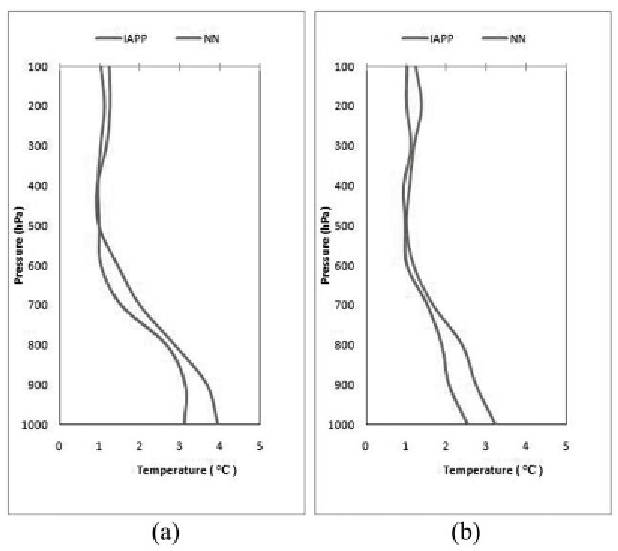Geoscience Reference
In-Depth Information
3°C and steadily decreases to 2.8° to 0.9° between 700-300 hPa and less than
2°C between 300-100 hPa. In order to reduce these errors, NOAA passes need
to be closer in time to the analysis of the particular events. Although the retrieval
could be subject to a large error for different scheme of retrievals. Khanna and
Kelker (1993) used the physical retrieval scheme using NOAA-11 and NOAA-
12 data and found that the difference between profiles of satellite and radiosonde
is about 3°C to 4°C between 700 hPa and 200 hPa. However the difference is
quite large about 7°C to 9°C below 850 hPa and above 150 hPa when 1000
hPa analysis is used as first guess. These errors are even higher when
climatology is used as a first guess in place of 1000 hPa analysis.
Figure 3 (a and b) shows an RMS difference of temperature profile using
neural network and IAPP retrievals against radiosonde observation for June
2008 of the stations (a) Chennai and (b) Port Blair. As it can be seen from the
figure that the error levels change considerably from lower levels to upper
levels of the atmosphere. The RMS error against the radiosonde observation
shows the retrieved profile using the neural network better as compared to the
IAPP, especially in the lower levels (up to 650 hPa) and at about 200 hPa. The
large errors in the retrieval of temperature profiles at lower atmosphere using
Fig. 3:
RMS error of temperature profiles of neural network and IAPP retrievals against
radiosonde profile: (a) Chennai [Lat = 13º N, Lon = 80.18º E] and (b) Port Blair
[Lat = 11.66º N, Lon = 92.71º E].

Search WWH ::

Custom Search